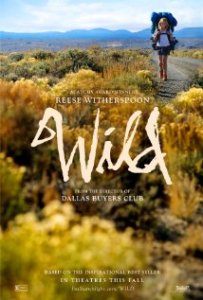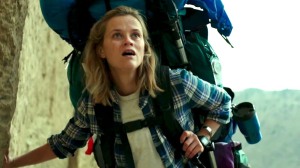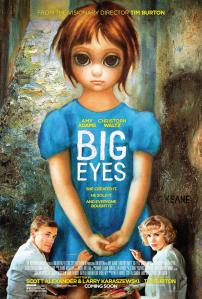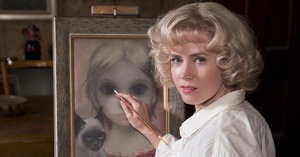
"Wild" (2014)
When an actor has to carry a film solely on their own performance, that's a difficult task. It is a different story altogether when that actor is basically the only person on-screen for the majority of the film.
For example, "Forrest Gump" becomes all the better due to Tom Hanks captivating yet simple performance, same with the intensity of Burt Lancaster in "Birdman Of Alcatraz." But there are also several other factors that can be attributed to the success of those movies, like a good supporting cast or effective cinematography. On the other hand, you have a film like "127 Hours" where James Franco is the only thing we see for most of the film, and not much else.
If he gives us one reason to not care about him or doubt his struggle, the film falls apart.
This is the case in "Wild," as Resse Witherspoon takes it upon herself to carry this film all on her own, both figuratively and physically. We watch as she rarely speaks, interacts with others even less, and turns walking 1,000 miles into a touching and effective character piece.
Cheryl Strayed (Witherspoon) has had a rough couple of years and seems to have lost vision of who she wants to be. After arguing with several loved ones, she decides to do the impossible - walk the entire Pacific Crest Trail, from the Mexican Border to Canada, on her own. Everyone tells her that she can back out at any time and they'll still love her, but that will not be stopping her anytime soon.

What I love about "Wild" is that, without ever saying anything, we are told everything we need to know. Through some visual cuts, tight editing and a haunting performance by Witherspoon, we now know why Cheryl is going on this hike, what her life was like before that, and her concerns about when she finishes the hike.
It is using the visual medium to your advantage, while still telling a beautifully sad story.
Plus, unlike recent films such as "The Judge" and "St. Vincent," right away we know the characters motivations and reasons for why they are acting this way. Every character action is logical, well-thought out and performed well enough for the audience to understand with just a simple gesture or emotional response.
To watch Resse Witherspoon turn from this sickly sad woman into a proud, confident person, is just incredible. At the beginning of the film, she can hardly lift her 65-pound backpack or figure out what kind of flames she needs to operate her stove. But by the end, that backpack means nothing to her. In fact, it has become a part of her.
In a strange way, "Wild" takes place specifically in the mind of Cheryl Strayed. Many scenes are driven and edited through her memories and stream of consciousness. When she runs into a horse on her hike, she remembers taking care of her mother's horse, leading her to a touching scene with her and the horse in the rain. This is a odd yet effective way to show just how dependent the film is on Witherspoon and her performance.
Even when thinking, she has to keep the audience invested.
"Wild" is an excellent character piece, as we watch a good person have tragic events occur, and then witness that person rise from those tragedies to become someone she can be proud of. Driven by a stunning performance by Resse Witherspoon and nature-documentary level cinematography, this is one that is touching, gritty, and thrilling.
Final Grade: A-

"Big Eyes" (2014)
Oh boy, Tim Burton.
Director Tim Burton has become a touchy subject these days, as his recent films have been, for lack of a better term, sucky. In particular, films like "Alice In Wonderland," "Planet Of The Apes," "Charlie And The Chocolate Factory" and "Dark Shadows."
But here is an interesting tidbit about all of those films - they're all based on a different source material. Even Burton's best films are based on other source material - "Ed Wood," "Big Fish," "Sweeny Todd: The Demon Barber of Fleet Street," "Sleepy Hollow" and even his Batman films.
The thing about all those good adaptations? They all added something new and innovative to the old stories that gave Burton's films their own unique flare, while still being those captivating stories. Burton tried to do the same with films like "Planet Of The Apes" and "Dark Shadows" but it just did not work.
Such is the life of an artist. Sometimes you have to put up with some crap to get to the good ones. And there is nothing wrong with that.
But my point is that Tim Burton has always been at his best when he finds creative and wholly original ways to adapt classic stories. Burton is a phenomenon of an artist, and one is not afraid to test the waters with his unique perspective.
Perhaps this is why Burton is the perfect choice to adapt the life story of Margaret Keane, a painter from the 1960s who was famous for painting children with enormous eyes. This has led to Burton's newest film "Big Eyes," that provides a fascinating modern tragedy of personality loss and being desperate.
Margaret (Amy Adams) has left her husband and moved to San Fransisco with her daughter, hoping to make a living off of her paintings. It's just too bad that 'no one wants to buy women paintings.' One day, she comes across a fellow painter, Walter Keane (Christoph Waltz) and is smitten by his charm and charisma. When Walter takes his paintings to a local art dealer, he shows off some of Margaret's paintings, but claims that he created them. Suddenly, the big eyed paintings start to take off and they begin to make more money than they need, even though Margaret has to live with the world thinking that Walter painted them.

Some people have criticized this film for Waltz's portrayal of Walter Keane, making him out to be psychotic and delusional. Personally, I thought Waltz's performance was the best part of the movie. Not only does he give the usual charm and love for the world we have come to expect from Waltz, but underneath it all is a desperate man who wants to make it in the world. To be given a chance to show the world what he has, even if 'what he has' is not really his own.
But as the film processes, we watch as Walter deteriorates into a greedy, self-obsessed man who begins to think that he did create those paintings. All the while, Waltz eyes light up when he can do business and make a bigger name for himself. The more people who believe his story, the more paintings he sells, and more happy he will be.
It just so happens that, for his own personal happiness, he must destroy the life of his wife. In a way, this makes the story just as much about Walter as it is the story of Margaret.
Don't get me wrong, Amy Adams does a wonderful job as her mental state starts to break down. But Christoph Waltz blows her out of the water, as he is known to do.
Combine this with Burton's eye-popping color scheme and dramatic angles, and you have a tragedy about desperation and relevance that begs to be viewed for its performances as much as its cinematography.
Overall, "Big Eyes" captures the imagination and creativity of a Tim Burton film, while telling a modern story about desperation and personal identity. The best of both worlds, on top of two mesmerizing performances by Waltz and Adams. Certainly, one of Burton's best films.
Final Grade: A-

No comments:
Post a Comment